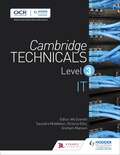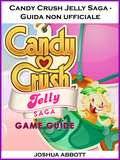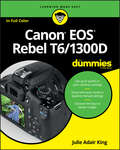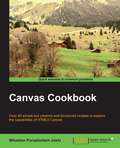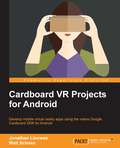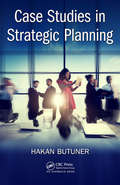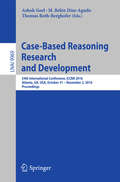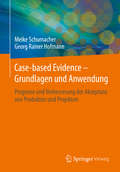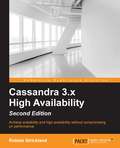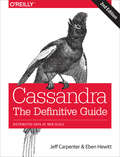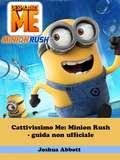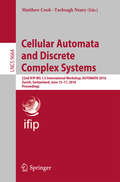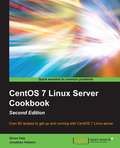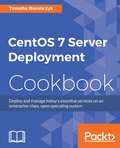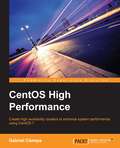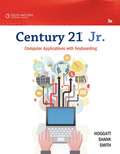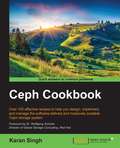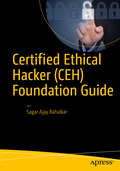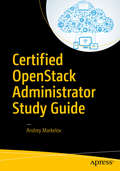- Table View
- List View
Cambridge Technicals Level 3 IT
by Victoria Ellis Graham Manson Saundra MiddletonExam Board: CambridgeLevel: KS4Subject: ITFirst Teaching: September 2016First Exam: June 207Support your teaching of the new Cambridge Technicals 2016 suite with Cambridge Technical Level 3 IT, developed in partnership between OCR and Hodder Education; this textbook covers each specialist pathway and ensures your ability to deliver a flexible course that is both vocationally focused and academically thorough.Cambridge Technical Level 3 IT is matched exactly to the new specification and follows specialist pathways in IT Infrastructure Technician, Emerging Digital Technology Practitioner, Application Developer, and Data Analyst.- Ensures effective teaching of each specialist pathway offered within the qualification.- Focuses learning on the skills, knowledge and understanding demanded from employers and universities.- Provides ideas and exercises for the application of practical skills and knowledge.- Developed in partnership between Hodder Education and OCR, guaranteeing quality resources which match the specification perfectly
Cambridge Technicals Level 3 IT
by Victoria Ellis Graham Manson Saundra MiddletonExam Board: CambridgeLevel: Key Stage 4Subject: ITFirst Teaching: September 2016First Exam: June 207Support your teaching of the new Cambridge Technicals 2016 suite with Cambridge Technical Level 3 IT, developed in partnership between OCR and Hodder Education; this textbook covers each specialist pathway and ensures your ability to deliver a flexible course that is both vocationally focused and academically thorough.Cambridge Technical Level 3 IT is matched exactly to the new specification and follows specialist pathways in IT Infrastructure Technician, Emerging Digital Technology Practitioner, Application Developer, and Data Analyst.- Ensures effective teaching of each specialist pathway offered within the qualification.- Focuses learning on the skills, knowledge and understanding demanded from employers and universities.- Provides ideas and exercises for the application of practical skills and knowledge.- Developed in partnership between Hodder Education and OCR, guaranteeing quality resources which match the specification perfectlyHodder Education have worked with OCR to make updates to our Cambridge Technicals textbooks to bring them more closely in line with the model assignment course requirements. We would like to let you know about a recent change to this textbook, updated pages which are now available free of charge as a PDF when you click on the 'Amended Pages' link on the left of this webpage.
Candidate Hillary: From Senator to Presidential Hopeful
by Beth J. Harpaz The Associated PressHillary is up in the polls! Hillary is down in the polls! She&’s a feminist and women love her; she&’s an enabler and women hate her. She&’s brilliant and hardworking; she&’s entitled and untrustworthy. Sounds like Hillary Rodham Clinton&’s 2016 or even 2008 presidential campaign, right? Well, go back even farther to the year 2000 to discover how every one of those phrases was uttered during Hillary&’s very first campaign when she made history as the only first lady to ever run for office. That groundbreaking bid for U.S. Senate in New York made headlines around the world, coming as it did on the heels of her husband&’s scandalous affair with a White House intern. Reporter Beth J. Harpaz was there, covering this political whirlwind for The Associated Press, and her book, "Candidate Hillary," previously published as "The Girls in the Van," revisits every key moment of the race. This funny, fascinating account puts you in the press van that followed Hillary from Buffalo to Brooklyn as she fought a cast of familiar characters, including New York&’s pugnacious Mayor Rudy Giuliani. It&’s filled with all the successes and missteps, the kind that plagued the assumed front-runner&’s 2008 campaign for the Democratic presidential nomination, which instead went to a young Senator from Illinois named Barack Obama. Now, updated with new perspectives from the author and an introduction by National Politics Reporter Lisa Lerer, "Candidate Hillary" offers a window into Hillary&’s vulnerabilities, strengths and the inner workings of the Clinton machine, all told with authority, humor and the benefit of hindsight.
Candy Crush Jelly Saga - Guida non ufficiale
by Hiddenstuff Entertainment Giulia RoasioSconfiggi i livelli, conquista bonus e punteggi record *guida non ufficiale* Allegato all'acquisto di questo eBook potrai registrarti per un programma supplementare di guide gratuite. copiando il link qui sotto avrai accesso agli ultimi update per le app ed i giochi più poplari. registrati grati qui sotto http://emailsignupform.subscribemenow.com/ Suggerimenti avanzati e guida strategica. questa è la più completa e dettagliata guida che puoi trovare online, disponibile come download per cellulari, dispositivi eBook, o in formato cartaceo. Con il successo delle mie altre centinaia di guide scritte e strategie, ho scritto un altra guida avanzata e professionale per i nuovi giocatori ed i veterani. Questa offre specifiche strategie e consigli su come progradire nel gioco, sconfiggere gli avversari, acquisire più monete e denaro, e molto altro. Qui è quello che avrai con l'acquisto di questa guida di gioco professionale ed avanzata - Consigli e strategie professionali. - Suggerimenti e hack - Segreti, consigli, trucchi, sblocchi, e trucchi usati dai giocatori pro! - Come avere tonnellate di denaro. - E MOLTO ALTRO! Tutte le versioni di questa guida includono immagini per meglio comprendere il gioco. Non esistono altre guide che siano altrettanto comprensive e avanzate quanto questa. Sarai felice di aver acquistato questa guida e ne avrai benefici molto maggiori se comparati con altre guide in circolazione meno efficaci. Acquista ora e distruggi gli avversari! diventa un giocatore pro oggi stesso! Per supporto e altre informazioni sui nostri prodotti visita: http://www.hiddenstuffentertainment.com/ Disclaimer: Questo prodotto non è associato, affiliato, appoggiato, certificato o sponsorizzato dal possessore del copyright originale. Tutti i marchi sono registrati, i marchi che appaiono in questo eBook sono di proprietà dei rispettivi proprietari.
Candy Crush Soda Saga Guida di Gioco non Ufficiale
by Valeria Ciccotti Joshua AbbottSuperate i livelli, ottenete tutti i potenziamenti e i punteggi più alti! Con la mia guida completa per Candy Crush Soda Saga apprenderete proprio tutto sul gioco! Le strategie descritte in questa guida sono note solo ai giocatori più esperti. La mia guida illustra tutto questo: - Panoramica e informazioni di base su Candy Crush Saga - Oggetti utili/combinazioni e ciò che fanno - Come ottenere più vite - Le migliori combinazioni di caramelle per superare i livelli e ottenere punteggi - Strategie per ogni tipo di livello. Come superare TUTTI i livelli! - Segreti, suggerimenti e trucchi usati dai giocatori professionisti! - Istruzioni dettagliate passo dopo passo - Strategie e dinamiche generali di gioco - Ed in più molto altro! Acquistate ora per non rimanere più bloccati mentre tentate di superare un livello, oppure senza vite! Diventate giocatori professionisti oggi! Disclaimer: Questo prodotto non è associato, affiliato, sostenuto o sponsorizzato da King o Midasplayer.com Limited, e non sono stati effettuati test, recensioni o certificazioni. Questa guida va usata come riferimento. Questo prodotto non modifica il gioco in alcun modo. Questa è una guida scritta e non è un programma software.
Canon EOS Rebel T6/1300D For Dummies
by Julie Adair KingA photography class in a bookYour Canon EOS Rebel T6/1300D is the tool you need to take photos worth bragging about. Your first step to filling your portfolio is picking up some pointers on how your camera works and how to take better photos. This book gets you started by demystifying all the photography terms the pros use, explaining your cameras menus and settings, and showing how to put your new knowledge together to create better images.- Tour your camera's menus- Get results in automatic mode- Learn all about exposure settings- Control focus and depth of field- Set your camera to get vivid color- Shoot better portraits and action shots- Instantly review your photos- Transfer files to your computer- Find tips for customizing your camera
Canvas Cookbook
by Bhushan Purushottam JoshiOver 80 simple but creative and structured recipes to explore the capabilities of HTML5 Canvas About This Book * Develop simple to advanced recipes of your own, and ultimately produce a great application * Discover a better way to use HTML5 Canvas, JavaScript, and CSS * Put your creative instincts to use in your day-to-day interface developments Who This Book Is For The book is intended for readers with a preliminary knowledge of JavaScript and CSS. Whether you're a beginner or expert in this technology, the book provides recipes to help you build your own application, presentation, or game. What You Will Learn * Draw basic shapes such as lines, arcs, curves, and text using the coordinate system * Learn about the animation cycle and use it to animate shapes * Grasp the knowledge required to create particles and use them * Give various effects to images and videos and also use them in animations * Discover the use of event listeners to make recipes interactive and to handle events through event handlers * Create good presentation graphics with graphs and charts * Learn all about 3D development, from building 3D objects to animating them * Convert your knowledge into a complete working game * Understand the interoperability and deployment of recipes on different browsers and on different devices In Detail With the growing popularity of HTML5 Canvas, this book offers tailored recipes to help you develop portable applications, presentations, and games. The recipes are simple yet creative and build on each other. At every step, the book inspires the reader to develop his/her own recipe. From basic to advanced, every aspect of Canvas API has been covered to guide readers to develop their own application, presentation, or game. Style and approach All the recipes are sequential and cover the basic and advanced concepts of Canvas. Every recipe is as simple as possible without compromising creativity
Cardboard VR Projects for Android
by Jonathan Linowes Matt SchoenDevelop mobile virtual reality apps using the native Google Cardboard SDK for Android About This Book * Learn how to build practical applications for Google's popular DIY VR headset * Build a reusable VR graphics engine on top of the Cardboard Java SDK and OpenGL ES graphics libraries * The projects in this book will showcase a different aspect of Cardboard development--from 3D rendering to handling user input Who This Book Is For The book is for established Android developers with a good knowledge level of Java. No prior OpenGL or graphics knowledge is required. No prior experience with Google Cardboard is expected, but those who are familiar with Cardboard and are looking for projects to expand their knowledge can also benefit from this book. What You Will Learn * Build Google Cardboard virtual reality applications * Explore the ins and outs of the Cardboard SDK Java classes and interfaces, and apply them to practical VR projects * Employ Android Studio, Android SDK, and the Java language in a straightforward manner * Discover and use software development and Android best practices for mobile and Cardboard applications, including considerations for memory management and battery life * Implement user interface techniques for menus and gaze-based selection within VR * Utilize the science, psychology, mathematics, and technology behind virtual reality, especially those pertinent to mobile Cardboard VR experiences * Understand Cardboard VR best practices including those promoted by Google Design Lab. In Detail Google Cardboard is a low-cost, entry-level media platform through which you can experience virtual reality and virtual 3D environments. Its applications are as broad and varied as mobile smartphone applications themselves. This book will educate you on the best practices and methodology needed to build effective, stable, and performant mobile VR applications. In this book, we begin by defining virtual reality (VR) and how Google Cardboard fits into the larger VR and Android ecosystem. We introduce the underlying scientific and technical principles behind VR, including geometry, optics, rendering, and mobile software architecture. We start with a simple example app that ensures your environment is properly set up to write, build, and run the app. Then we develop a reusable VR graphics engine that you can build upon. And from then on, each chapter is a self-contained project where you will build an example from a different genre of application, including a 360 degree photo viewer, an educational simulation of our solar system, a 3D model viewer, and a music visualizer. Style and approach This project based guide is written in a tutorial-style project format, where you will learn by doing. It is accompanied by in-depth explanations and discussions of various technologies, and provides best practices and techniques.
Case Studies in Strategic Planning
by Hakan ButunerCase Studies in Strategic Planning shows you how to do systematic strategic planning in real-life cases, regardless of your level of expertise. The simplified version of this methodology and its analysis tools, based on fundamentals, are easily understood and universally applied to any type of business for developing strategic plans. More important
Case-Based Reasoning Research and Development: 24th International Conference, ICCBR 2016, Atlanta, GA, USA, October 31 - November 2, 2016, Proceedings (Lecture Notes in Computer Science #9969)
by Ashok Goel, M Belén Díaz-Agudo and Thomas Roth-BerghoferThis book constitutes the refereed proceedings of the 24th International Conference on Case-Based Reasoning Research and Development, ICCBR 2016, held in Atlanta, GA, USA, in October/November 2016.The 14 revised full papers presented were carefully reviewed and selected from 44 submissions. The papers cover a wide range of CBR topics that are of interest both to researchers and practitioners from foundations of Case-Based Reasoning; over CBR systems for specific tasks and related fields; up to CBR systems, applications and lessons learned in specific areas of expertise such as health; e-science; finance; energy, logistics, traffic; game/AI; cooking; diagnosis, technical support; as well as knowledge and experience management.
Case-based Evidence - Grundlagen und Anwendung: Prognose und Verbesserung der Akzeptanz von Produkten und Projekten
by Meike Schumacher Georg Rainer HofmannDas Praxisbuch erl#65533;utert anschaulich anhand konkreter F#65533;lle, wie Analogien f#65533;r die Prognose und Erh#65533;hung der Akzeptanz neuer Produkte und Projekte genutzt werden k#65533;nnen. Der Leser erh#65533;lt eine ,,Schritt f#65533;r Schritt Anleitung" zur Methodenanwendung mit zahlreichen Hinweisen und Best-Practice Beispielen. Die Autoren erl#65533;utern allgemein verst#65533;ndlich die Teilschritte der Methode: Zun#65533;chst werden die kritischen Ph#65533;nomene identifiziert. Analogieschl#65533;sse ausgew#65533;hlter Vergleichsf#65533;lle werden auf den aktuellen Fall #65533;bertragen. Diese isomorphen Mechanismen bilden die Grundlage eines synoptischen Modells, welches schlie#65533;lich in einer Serie qualifizierter Experteninterviews evaluiert wird. Das Buch richtet sich an Fachkr#65533;fte aus Gesch#65533;ftsentwicklung und Innovationsmanagement, aber auch an Praktiker aus Produktentwicklung und Marketing.
Cassandra 3.x High Availability - Second Edition
by Robbie StricklandAchieve scalability and high availability without compromising on performance About This Book * See how to get 100 percent uptime with your Cassandra applications using this easy-follow guide * Learn how to avoid common and not-so-common mistakes while working with Cassandra using this highly practical guide * Get familiar with the intricacies of working with Cassandra for high availability in your work environment with this go-to-guide Who This Book Is For If you are a developer or DevOps engineer who has basic familiarity with Cassandra and you want to become an expert at creating highly available, fault tolerant systems using Cassandra, this book is for you. What You Will Learn * Understand how the core architecture of Cassandra enables highly available applications * Use replication and tunable consistency levels to balance consistency, availability, and performance * Set up multiple data centers to enable failover, load balancing, and geographic distribution * Add capacity to your cluster with zero downtime * Take advantage of high availability features in the native driver * Create data models that scale well and maximize availability * Understand common anti-patterns so you can avoid them * Keep your system working well even during failure scenarios In Detail Apache Cassandra is a massively scalable, peer-to-peer database designed for 100 percent uptime, with deployments in the tens of thousands of nodes, all supporting petabytes of data. This book offers a practical insight into building highly available, real-world applications using Apache Cassandra. The book starts with the fundamentals, helping you to understand how Apache Cassandra's architecture allows it to achieve 100 percent uptime when other systems struggle to do so. You'll get an excellent understanding of data distribution, replication, and Cassandra's highly tunable consistency model. Then we take an in-depth look at Cassandra's robust support for multiple data centers, and you'll see how to scale out a cluster. Next, the book explores the domain of application design, with chapters discussing the native driver and data modeling. Lastly, you'll find out how to steer clear of common anti-patterns and take advantage of Cassandra's ability to fail gracefully. Style and approach This practical guide will get you implementing Cassandra right from the design to creating highly available systems. Through a systematic, step-by-step approach, you will learn different aspects of building highly available Cassandra applications and all this with the help of easy-to-follow examples, tips, and tricks.
Cassandra: Distributed Data at Web Scale
by Eben Hewitt Jeff CarpenterImagine what you could do if scalability wasn't a problem. With this hands-on guide, you’ll learn how the Cassandra database management system handles hundreds of terabytes of data while remaining highly available across multiple data centers. This expanded second edition—updated for Cassandra 3.0—provides the technical details and practical examples you need to put this database to work in a production environment.Authors Jeff Carpenter and Eben Hewitt demonstrate the advantages of Cassandra’s non-relational design, with special attention to data modeling. If you’re a developer, DBA, or application architect looking to solve a database scaling issue or future-proof your application, this guide helps you harness Cassandra’s speed and flexibility.Understand Cassandra’s distributed and decentralized structureUse the Cassandra Query Language (CQL) and cqlsh—the CQL shellCreate a working data model and compare it with an equivalent relational modelDevelop sample applications using client drivers for languages including Java, Python, and Node.jsExplore cluster topology and learn how nodes exchange dataMaintain a high level of performance in your clusterDeploy Cassandra on site, in the Cloud, or with DockerIntegrate Cassandra with Spark, Hadoop, Elasticsearch, Solr, and Lucene
Cassandra: The Definitive Guide
by Eben Hewitt Jeff CarpenterImagine what you could do if scalability wasn't a problem. With this hands-on guide, you'll learn how the Cassandra database management system handles hundreds of terabytes of data while remaining highly available across multiple data centers. This expanded second edition--updated for Cassandra 3.0--provides the technical details and practical examples you need to put this database to work in a production environment.Authors Jeff Carpenter and Eben Hewitt demonstrate the advantages of Cassandra's non-relational design, with special attention to data modeling. If you're a developer, DBA, or application architect looking to solve a database scaling issue or future-proof your application, this guide helps you harness Cassandra's speed and flexibility.Understand Cassandra's distributed and decentralized structureUse the Cassandra Query Language (CQL) and cqlsh--the CQL shellCreate a working data model and compare it with an equivalent relational modelDevelop sample applications using client drivers for languages including Java, Python, and Node.jsExplore cluster topology and learn how nodes exchange dataMaintain a high level of performance in your clusterDeploy Cassandra on site, in the Cloud, or with DockerIntegrate Cassandra with Spark, Hadoop, Elasticsearch, Solr, and Lucene
Cats on Instagram
by @cats_of_instagramFrom the popular Instagram profile comes this collection of adorable cat photos to warm the hearts of cat lovers everywhere.Cat lovers, rejoice! This irresistible book compiles more than four hundred photos from the hugely popular Instagram profile @cats_of_instagram into a keepsake treasure. Playful categories including “bowties,” “surprise!,” and “happy cats” showcase all the charm and delightful quirks of the wide world of cats. This is an ebook that will have feline fans smiling in recognition, surprise, and appreciation.
Cattivissimo Me: Minion Rush - guida non ufficiale
by Joshua Abbott Giulia RoasioGuida non ufficiale per Cattivissimo Me: Minion Rush Oltre all'acquisto di questo ebook puoi registrarti gratis per il nostro programma di guide supplementare. Copiando il link qui sotto avrai accesso agli ultimi aggiornamenti per i videogiochi e le app più popolari . registrati gratis a: http://emailsignupform.subscribemenow.com/ Guida con suggerimenti e strategie avanzate. Questa è la più completa e dettagliata guida che troverai online. disponibile con download istantaneo sul tuo telefono, dispositivo ebook o in formato cartaceo. Dopo il successo delle centinaia di altre guide e strategie scritte da me ecco un'altra guida avanzata e professionale per nuovi e vecchi giocatori. Questa offfre specifiche strategie e suggerimenti su come progredire nel gioco, sconfiggere gli avversari, acquisire valuta e molto altro! Qui è quello che avrai con il tuo acquisto di questa guida professionale ed avanzata: -Strategie e suggerimenti professionali -Trucchi e hack -Segreti, suggerimenti e trucchi usati dai giocatori pro -Come ottenere valuta in gran quantità -E MOLTO ALTRO! Tutte le versioni di questa guida hanno screenshot per aiutarti a capire il gioco. Non ci sono altre guide più complete ed avanzate di questa. Se stai cercando guide per altri giochi ed app popolari puoi cercare altri titoli di Joshua Abbott e HSE Games. Sarai felice del tuo acquisto relativo a questa guida e ne trarrai beneficio enormemente in comparazione con altre guide in circolazione meno efficaci. Acquista oggi e distruggi gli avversari! Diventa un giocatore pro oggi stesso! Per supporto ed altre informazioni sui nostri prodotti visita: http://www.hiddenstuffentertainment.com/ Disclaimer: Questo prodotto non è associato, affiliato, supportato, certificato o sponsorizzato dal possessore del Copyright originale. Tutti i marchi registrati che appaiono in questo ebook s
Cellular Automata and Discrete Complex Systems: 22nd IFIP WG 1.5 International Workshop, AUTOMATA 2016, Zurich, Switzerland, June 15-17, 2016, Proceedings (Lecture Notes in Computer Science #9664)
by Matthew Cook Turlough NearyThis volume constitutes the thoroughly refereed proceedings of the 22nd IFIP WG 1. 5 International Workshop on Cellular Automata and Discrete Complex Systems, AUTOMATA 2016, held in Zurich, Switzerland, in June 2016. This volume contains 3 invited talks in full-paper length and 12 regular papers, which were carefully reviewed and selected from a total of 23 submissions. The papers feature research on all fundamental aspects of cellular automata and related discrete complex systems and deal with the following topics: dynamical, topological, ergodic and algebraic aspects; algorithmic and complexity issues; emergent properties; formal language processing; symbolic dynamics; models of parallelism and distributed systems; timing schemes; phenomenological descriptions; scientific modeling; and practical applications.
CentOS 7 Linux Server Cookbook - Second Edition
by Jonathan Hobson Oliver PelzOver 80 recipes to get up and running with CentOS 7 Linux server About This Book * A practical guide to install, configure, administer and maintain CentOS 7 servers * An in-depth guide to the CentOS 7 operating system, exploring its various new features and changes in server administration * Presents tricks and solutions to tackle common server issues with the help of practical examples and real-life scenarios Who This Book Is For This book is targeted at beginner and more experienced system administrators alike who want to use CentOS as their server solution. Readers do not need much pre-knowledge or experience at all to work with this book. What You Will Learn * Install and configure CentOS 7 Linux server system from scratch using normal and advanced methods * Maintain a performance-based and secure server solution by deploying expert configuration advice and managing software packages * Monitor, manage and develop your server's file system to maintain a stable performance * Gain best practice methods on sharing files and resources through a network * Install and configure common standard services such as web, mail, FTP, database and domain name server technologies * Introduce you to the world of operating-system-level virtualization using the Docker platform. * Understand the fundamentals of the Security-Enhanced Linux access control architecture * Monitor your IT infrastructure using Nagios In Detail This book will provide you with a comprehensive series of starting points that will give you direct access to the inner workings of the latest CentOS version 7 and help you trim the learning curve to master your server. You will begin with the installation and basic configuration of CentOS 7, followed by learning how to manage your system, services and software packages. You will then gain an understanding of how to administer the file system, secure access to your server and configure various resource sharing services such as file, printer and DHCP servers across your network. Further on, we cover advanced topics such as FTP services, building your own DNS server, running database servers, and providing mail and web services. Finally, you will get a deep understanding of SELinux and you will learn how to work with Docker operating-system virtualization and how to monitor your IT infrastructure with Nagios. By the end of this book, you will have a fair understanding of all the aspects of configuring, implementing and administering CentOS 7 Linux server and how to put it in control. Style and approach This book is a practical reference guide with hands-on examples and solutions to real-world administration problems. It covers in-depth and comprehensive information on CentOS 7 and its new features.
CentOS 7 Server Deployment Cookbook
by Timothy BoronczykDeploy and manage today's essential services on an enterprise-class, open operating system About This Book * Configure and manage Linux servers in varying scenarios and for a range of business requirements * Explore the up-to-date features of CentOS using real-world scenarios * See practical and extensive recipes to deploy and manage CentOS Who This Book Is For This book is for Linux professionals with basic Unix/Linux functionality experience, perhaps even having set up a server before, who want to advance their knowledge in administering various services. What You Will Learn * See how to deploy CentOS easily and painlessly, even in multi-server environments * Configure various methods of remote access to the server so you don't always have to be in the data center * Make changes to the default configuration of many services to harden them and increase the security of the system * Learn to manage DNS, emails and web servers * Protect yourself from threats by monitoring and logging network intrusion and system intrusion attempts, rootkits, and viruses * Take advantage of today's powerful hardware by running multiple systems using virtualization In Detail CentOS is derived from Red Hat Enterprise Linux (RHEL) sources and is widely used as a Linux server. This book will help you to better configure and manage Linux servers in varying scenarios and business requirements. Starting with installing CentOS, this book will walk you through the networking aspects of CentOS. You will then learn how to manage users and their permissions, software installs, disks, filesystems, and so on. You'll then see how to secure connection to remotely access a desktop and work with databases. Toward the end, you will find out how to manage DNS, e-mails, web servers, and more. You will also learn to detect threats by monitoring network intrusion. Finally, the book will cover virtualization techniques that will help you make the most of CentOS. Style and approach This easy-to-read cookbook is filled with practical recipes. Hands-on, task-based exercises will present you with real-world solutions to deploy and manage CentOS in varying business scenarios.
CentOS High Performance
by Gabriel CanepaCreate high availability clusters to enhance system performance using CentOS 7 About This Book * Master the concepts of high performance and high availability to eliminate performance bottlenecks * Maximize the uptime of services running in a CentOS 7 cluster * A step-by-step guide that will provide knowledge of methods and approaches to optimize the performance of CentOS clusters Who This Book Is For This book is targeted at system administrators: those who want a detailed, step-by-step guide to learn how to set up a high-availability CentOS 7 cluster, and those who are looking for a reference book to help them learn or refresh the necessary skills to ensure their systems and respective resources are utilized optimally. No previous knowledge of high-availability systems is needed, though the reader is expected to have at least some degree of familiarity with any spin-off of the Fedora family of Linux distributions, preferably CentOS. What You Will Learn * Install a CentOS 7 cluster and network infrastructure * Configure firewall, networking, and clustering services and settings * Set up and test a HAC (high-availability cluster) to host an Apache web server and a MariaDB database server * Monitor performance and availability * Identify bottlenecks and troubleshoot issues * Improve performance and ensure high availability In Detail CentOS is the enterprise level Linux OS, which is 100% binary compatible to Red Hat Enterprise Linux (RHEL). It acts as a free alternative to RedHat's commercial Linux offering, with only a change in the branding. A high performance cluster consists in a group of computers that work together as one set parallel, hence minimizing or eliminating the downtime of critical services and enhancing the performance of the application. Starting with the basic principles of clustering, you will learn the necessary steps to install a cluster with two CentOS 7 servers. We will then set up and configure the basic required network infrastructure and clustering services. Further, you will learn how to take a proactive approach to the split-brain issue by configuring the failover and fencing of the cluster as a whole and the quorum of each node individually. Further, we will be setting up HAC and HPC clusters as a web server and a database server. You will also master the art of monitoring performance and availability, identifying bottlenecks, and exploring troubleshooting techniques. At the end of the book, you'll review performance-tuning techniques for the recently installed cluster, test performance using a payload simulation, and learn the necessary skills to ensure that the systems, and the corresponding resources and services, are being utilized to their best capacity. Style and approach An easy-to-follow and step-by-step guide with hands-on instructions to set up real-world simple cluster scenarios that will start you on the path to building more complex applications on your own.
Century 21® Jr.: Computer Applications With Keyboarding (Century 21 Keyboarding Ser.)
by Jack P. Hoggatt Jon A. Shank Jr. James R. SmithNIMAC-sourced textbook
Century 21® Jr.: Computer Applications with Keyboarding
by Jack P. Hoggatt Jon A. Shank James R. SmithJust getting started in the computer world? This introductory text, CENTURY 21(tm), JR. COMPUTER APPLICATIONS WITH KEYBOARDING, 3E is the perfect companion for navigation of computer basics, file management, the Internet, keyboarding, word processing, desktop publishing, spreadsheets, presentations, and databases. CENTURY 21, JR. provides step-by-step guidance, with engaging activities. Units are divided into easy-to-manage chapters and projects will help students learn the features of Microsoft Office 2013 and 365.
Ceph Cookbook
by Karan SinghOver 100 effective recipes to help you design, implement, and manage the software-defined and massively scalable Ceph storage system About This Book * Implement a Ceph cluster successfully and gain deep insights into its best practices * Harness the abilities of experienced storage administrators and architects, and run your own software-defined storage system * This comprehensive, step-by-step guide will show you how to build and manage Ceph storage in production environment Who This Book Is For This book is aimed at storage and cloud system engineers, system administrators, and technical architects who are interested in building software-defined storage solutions to power their cloud and virtual infrastructure. If you have basic knowledge of GNU/Linux and storage systems, with no experience of software defined storage solutions and Ceph, but eager to learn this book is for you. What You Will Learn * Understand, install, configure, and manage the Ceph storage system * Get to grips with performance tuning and benchmarking, and gain practical tips to run Ceph in production * Integrate Ceph with OpenStack Cinder, Glance, and nova components * Deep dive into Ceph object storage, including s3, swift, and keystone integration * Build a Dropbox-like file sync and share service and Ceph federated gateway setup * Gain hands-on experience with Calamari and VSM for cluster monitoring * Familiarize yourself with Ceph operations such as maintenance, monitoring, and troubleshooting * Understand advanced topics including erasure coding, CRUSH map, cache pool, and system maintenance In Detail Ceph is a unified, distributed storage system designed for excellent performance, reliability, and scalability. This cutting-edge technology has been transforming the storage industry, and is evolving rapidly as a leader in software-defined storage space, extending full support to cloud platforms such as Openstack and Cloudstack, including virtualization platforms. It is the most popular storage backend for Openstack, public, and private clouds, so is the first choice for a storage solution. Ceph is backed by RedHat and is developed by a thriving open source community of individual developers as well as several companies across the globe. This book takes you from a basic knowledge of Ceph to an expert understanding of the most advanced features, walking you through building up a production-grade Ceph storage cluster and helping you develop all the skills you need to plan, deploy, and effectively manage your Ceph cluster. Beginning with the basics, you'll create a Ceph cluster, followed by block, object, and file storage provisioning. Next, you'll get a step-by-step tutorial on integrating it with OpenStack and building a Dropbox-like object storage solution. We'll also take a look at federated architecture and CephFS, and you'll dive into Calamari and VSM for monitoring the Ceph environment. You'll develop expert knowledge on troubleshooting and benchmarking your Ceph storage cluster. Finally, you'll get to grips with the best practices to operate Ceph in a production environment. Style and approach This step-by-step guide is filled with practical tutorials, making complex scenarios easy to understand.
Certified Ethical Hacker (CEH) Foundation Guide
by Sagar Ajay RahalkarPrepare for the CEH training course and exam by gaining a solid foundation of knowledge of key fundamentals such as operating systems, databases, networking, programming, cloud, and virtualization. Based on this foundation, the book moves ahead with simple concepts from the hacking world. The Certified Ethical Hacker (CEH) Foundation Guide also takes you through various career paths available upon completion of the CEH course and also prepares you to face job interviews when applying as an ethical hacker.The book explains the concepts with the help of practical real-world scenarios and examples. You'll also work with hands-on exercises at the end of each chapter to get a feel of the subject. Thus this book would be a valuable resource to any individual planning to prepare for the CEH certification course.What You Will LearnGain the basics of hacking (apps, wireless devices, and mobile platforms)Discover useful aspects of databases and operating systems from a hacking perspectiveDevelop sharper programming and networking skills for the examExplore the penetration testing life cycle Bypass security appliances like IDS, IPS, and honeypotsGrasp the key concepts of cryptographyDiscover the career paths available after certificationRevise key interview questions for a certified ethical hackerWho This Book Is ForBeginners in the field of ethical hacking and information security, particularly those who are interested in the CEH course and certification.
Certified OpenStack Administrator Study Guide
by Andrey MarkelovTeaches you how and what to study in order to be best prepared for the Certified OpenStack Administrator exam. This fast-growing technology is creating a market that needs more qualified IT specialists with proven skills. This book covers 100% of the exam requirements for both The OpenStack Foundation and the Mirantis OpenStack Certification Exam.Each theme is taught using practical exercises and instructions for the command line and for the graphical client (Horizon). Each chapter is followed by review questions, complete with answers. Even after you have taken and passed your OpenStack exam, this book will remain a useful reference. What You Will LearnUnderstand the components that make up the cloud.Install and make an OpenStack distribution from Mirantis, Red Hat or another community version.Work with OpenStack Identity Management, Dashboard, CLI, Object Storage, Block Storage, Networking, Telemetry, Orchestration, and Image Services.Learn how to troubleshoot all the main OpenStack services.Understand where to find information for future work with OpenStack.Who This Book Is ForCertified OpenStack Administrator Study Guide is for Cloud and Linux engineers looking for a better understanding of how to work with the modern OpenStack IaaS Cloud, and wants to prove their knowledge by passing a Certified OpenStack Administrator Exam.
